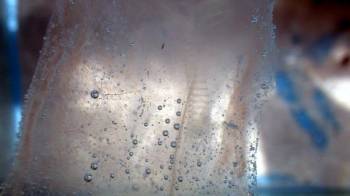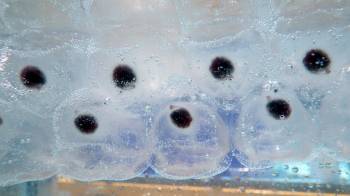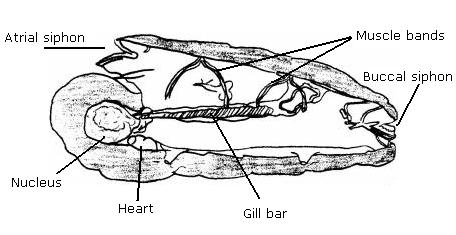Physical Description

|
|
|
Reddish pigment of adult Pegea confoederata
(photo by Helen Twaddle, Heron Island)
|
Like most organisms in the class Thaliacea, Pegea confoederata are clear and gelatinous. These creatures are made up of at least 95% water compared to crustacean plankton which is usually only made up of 70-87% water (Alldredge and Madin 1982). The solitary generation (see reproduction for more information on generations) tends to grow to approximately 5cm in length, but have been known to exceed 9cm in Australian waters (Madin and Harbison 1978). In places other than in Australian waters, specimens reaching up to 12cm have been found (Thompson 1948). Smaller juveniles are often pigmented more than adults, but adults often still have a reddish tinge that stays with them (Madin and Harbison 1978). The main body shape is cylindrical, with circular muscle bands that contract to assist in water filtration. The test is quite thin overall, but tends to thicken around the stomach/stolon and at the oral end (Madin and Harbison 1978).
|

|
|
|
Aggregate generation of adult Pegea confoederata
(photo by Helen Twaddle, Heron Island)
|
The aggregate generation (see reproduction for more information on generations) is generally a similar size to the solitary generation, but has been known to grow slightly larger in extreme cases (Madin and Harbison 1978). In the chain, the salps are generally all of a similar size but are plumper than individuals and therefore aren’t as closely packed as some other similar species. Packing is usually two lines thick and off-centred so that one row fits into the gaps of the other row (Madin and Harbison 1978).

Anatomical diagram of adult form of Pegea confoedorata
(diagram by Helen Twaddle)
|
In both generations, the pharynx is connected to a gill bar that begins dorsally and ends ventrally (Ruppert et al. 2004). The gut and gonads are contained in the ‘nucleus’, a reddish-brown coloured sphere at the atrial end of the salp. Directly in front of the nucleus is the heart, which pumps blood around the body. For more details about the anatomy of Pegea confoederata, please visit Anatomy & Physiology.
|